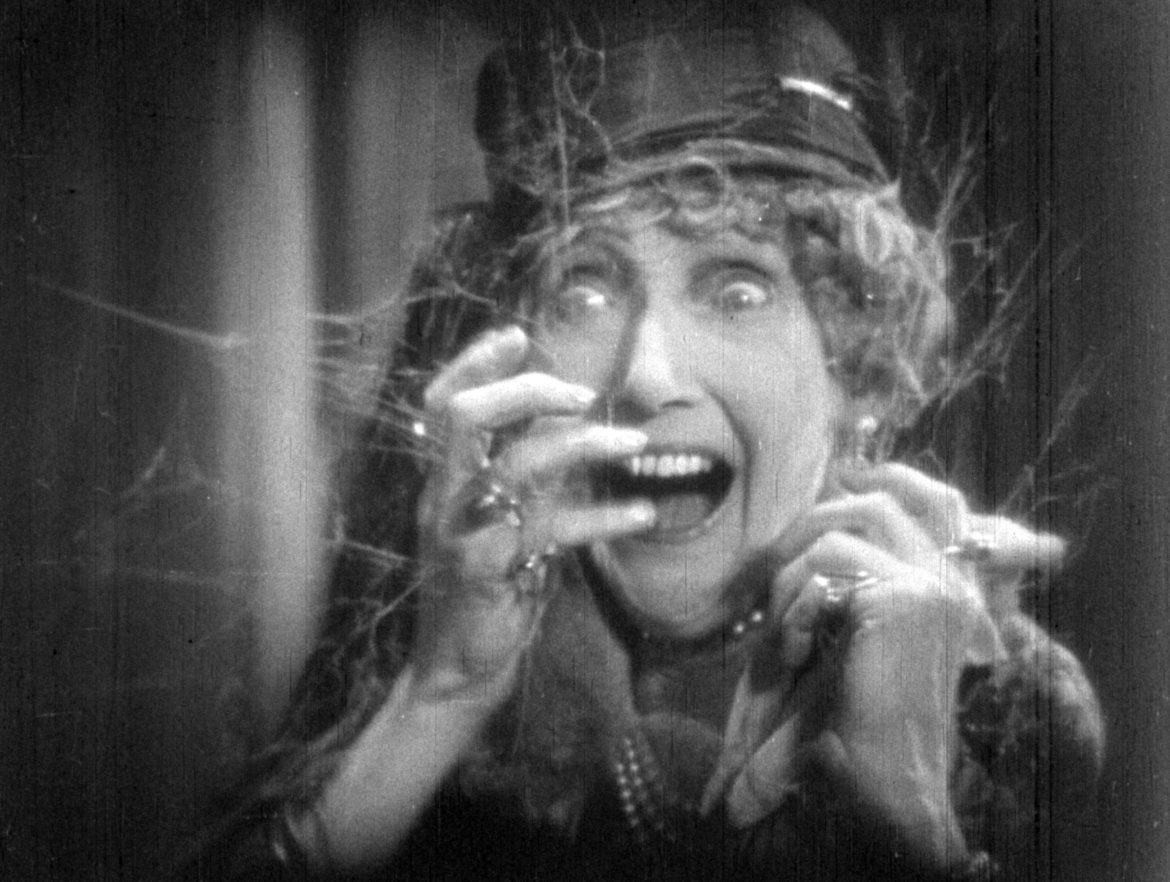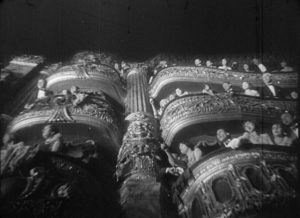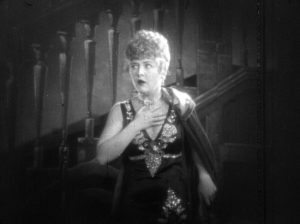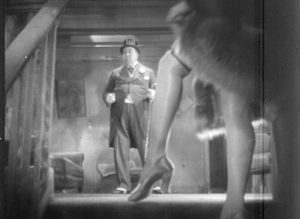One of the great curiosities about early horror films, particularly the American variety: why are they so scared of horrifying? Paul Leni’s The Last Warning (1929) – more or less a reboot of his previous The Cat and the Canary from 2 years prior, swapping a spooky old Broadway stage for a spooky old mansion – is typical of this impulse. It’s impeccably decked out and dressed up, but is almost distractingly committed to draining any scares from the proceedings. It’s German Expressionism as Scooby Doo episode, complete with knock-kneed protagonists, limp laughs, and a final-act, mask-removing reveal.
It’s still a lot of fun – of course, so is Scooby Doo if you’re in the right mood (read: a child, or stoned).
Leni rose to prominence in his home country of Germany as a prolific art director, but it was his involvement with Waxworks that brought Hollywood calling. His Expressionist sensibility and playfulness is evident throughout The Last Warning, and elevates it above your standard Spooky Old [Insert Place Name Here] lark.
The narrative is boilerplate, an excuse for Leni to play around in his Expressionist sandbox. It’s really most notable for the facts that a) it’s based on a story by Wadsworth Camp (father of A Wrinkle In Time author Madeline L’Engle) and b) it bears a strong resemblance, in broad strokes, to the incredibly poorly received 2015 found-footage film The Gallows.
The film throws us right into the action, as police clear a theater following the mysterious death of its proprietor, John Woodford, on stage. With the murder unsolved and the theater deemed haunted, it’s shuttered for years, until Woodford’s “friend” Arthur McHugh (Montagu Love, having a tremendous amount of fun) appears, intent on reopening it. The cast of that fateful night is reconvened for an encore performance … though McHugh may have more on his mind than an artistic tribute to the dearly departed Woodford.
Ok, of course he does. The play they were performing, and will perform again? It’s titled “The Snare.” The play’s the thing, so forth.
In any case, all the performers and various stagehands and technicians return, despite the palpable danger (and creaky boards, and scratching sounds, and spiderwebs, and trapdoors, and hidden passageways, and the fact that a dude died last time they did this). Some return because they need the money, others because they fear failure to do so will cast them in a suspicious light.
In one of the Leni’s best touches, the reopening of the theater, as the players convene, resembles a supernatural building coming to life, its two upper windows like eyes opening as the blinds are pulled. It’s reminiscent of The Amityville Horror, among many other haunted house genre entries, and it’s just one of several moments when the film flirts with real scares. But for whatever reason – lack of trust in the audience, skepticism of the commercial appeal of horror, or just a reflexive desire to make ‘em laugh – these moments are abandoned as quickly as they are conjured.
The Last Warning volleys between incipient fright flick, murder mystery whodunit, and low comedy (complete with a fart joke! In a silent!). None of these modes ever really takes hold, so its main appeal lies in admiring Leni’s skill with the camera, the placement of bodies in the scenes, and goofy touches, like intertitles that try to “scream” as text (or, memorably, the words of two brother financiers, which overlap on screen, implying their comic tendency to say the same thing at the same time). Leni even finds time for some pre-Code sexiness.
There are a few good laughs (the fart joke is not among them, I am sad to report), and the final chase scene through the theater – across balconies, up and down trellises, swinging the camera from a rope – is kinetic and exciting. The chase itself reveals one of the key advantages of the silents, which could concern themselves with movement without worrying about the integration of clumsy recording equipment.
None of this is exactly undone by the Scooby Doo ending, but it’s hard not to think The Last Warning would hold up better today if it believed in ghosts. Perhaps this is demanding too much from an earlier age: the admirably lunatic commitment of something like Robert Eggers’ 2015 The Witch is just not going to be found in a 1929 haunted house silent (fine: haunted stage). It was made with different assumptions and for a different audience. But there are enough hints of the horror to come to make you wish Leni had bucked convention a bit more.
He never had another chance. The Last Warning was Paul Leni’s last film, dying young of blood poisoning shortly after. Tragic as it is, perhaps someone like Eggers might think about restaging that story – there’s little doubt Leni would’ve enjoyed the idea. And maybe this time, instead of a prosaic villain who would’ve gotten away with it if it weren’t for those pesky kids, the narrative might land on something truly unsettling instead.
One final note: The Last Warning was screened at the SF Silent Film Festival, with live musical accompaniment by Donald Sosin on piano. Sosin’s playing improved the film immeasurably, and if you get a chance to see a film with him in attendance, do it! You won’t regret it.






